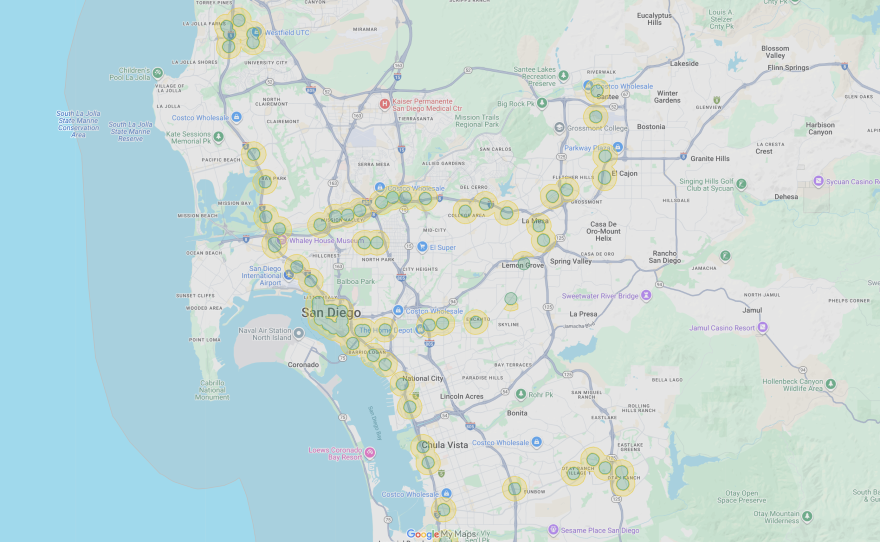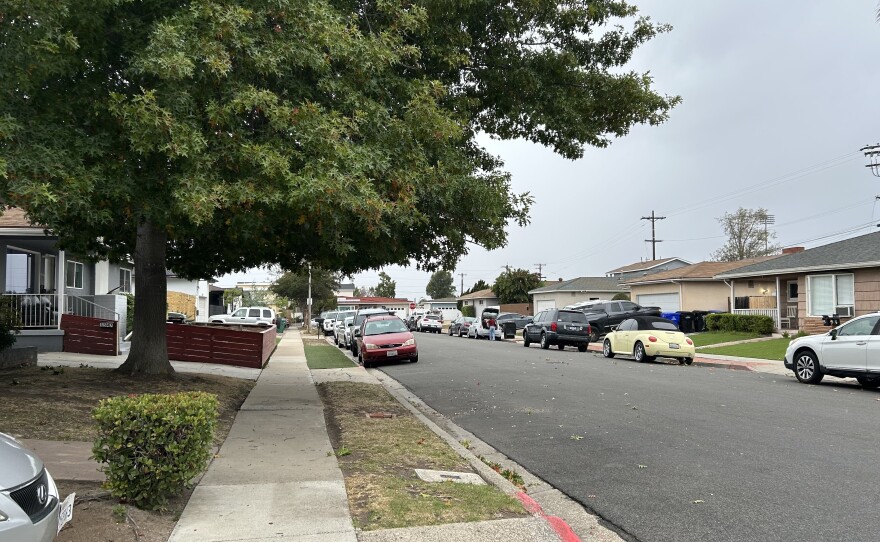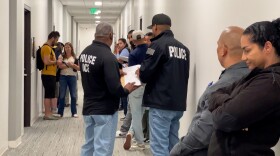Governor Gavin Newsom just signed SB 79, making it soon legal to build apartments near transit regardless of local zoning.
The new law will go into effect next year. It'll allow dense development within a half mile of some stations.
But it doesn’t apply to just any old bus stop. The law only applies at subway and light rail stations, and for rapid bus lines with their own lanes.
This map shows the places that will likely be affected statewide.
In San Diego County, that means the trolley system, the Sprinter and just a few rapid bus stops. Many of San Diego's trolley stations already allow dense development.

“This legislation will help make way for more housing near public transit and ensure that cities with this infrastructure do their part to address California’s housing crisis,” Mayor Todd Gloria said in a statement. “At the City of San Diego, we’re already ahead of the game — about 85 to 90 percent of the new homes we’ve permitted are located near transit. Through our recent and upcoming housing policy reforms, we’ve already anticipated the kind of changes this law calls for. We look forward to putting it further into action and continuing to lead the way on building homes in the right places.”
But there are still lots of places that are an easy walk to a trolley that don’t allow apartments.
For example, in the College Area, where SDSU has made it clear there aren’t enough homes for students.
The city is in the process of updating the zoning there. But, like in Clairemont, planners are still reluctant to allow more density on single-family zoned streets.
That's why state lawmakers passed this bill. Author Scott Wiener said it unwinds decades of restrictive policies that have driven up housing costs and forced millions of people away from jobs and transit and into long commutes.

The new law is monumental, said Nicole Capretz, founder and CEO of the advocacy organization Climate Action Campaign.
“It's one of the best climate solutions we have, which is to build housing near transit so that people don't have to drive so much, which means there's less carbon pollution in the air, which means people have better public health, which means people can live more accessible and affordable lives,” she said. “I mean, it's pretty much the holy grail of the kind of climate solution we want and need."
This substack from M. Nolan Gray and Aaron Eckhouse at California YIMBY explains in extensive detail what the bill does, where it will impact, and how cities can implement alternative plans.
It also explains the affordability requirements and anti-displacement measures that are included in the bill. Places that have a high fire risk or are low resource areas can also be excluded for several years.
The Bay Area and Los Angeles have much bigger transit systems and the same restrictive housing policies, so they will see a bigger impact than in San Diego.
And cities won’t really see the effects for several years.
But this law marks a historic change in California, addressing both the housing shortage and the climate all at once.




